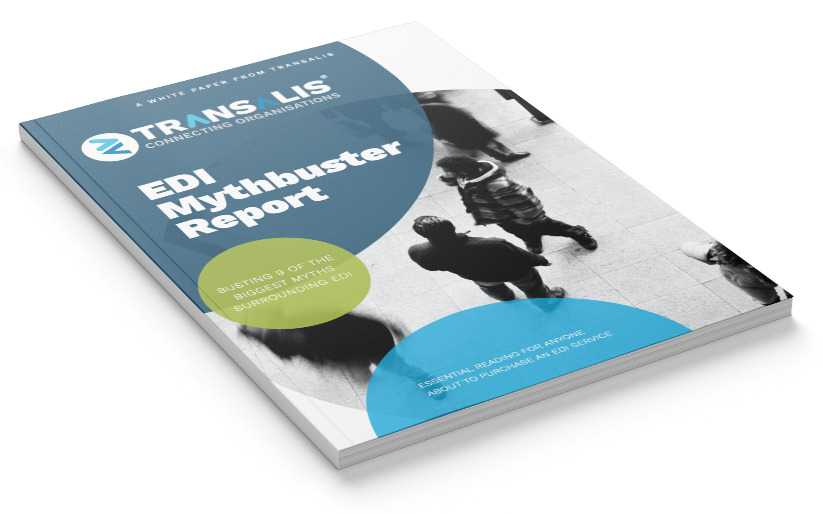Busting 9 of the biggest myths surrounding EDI
If you’re thinking of introducing EDI to your business, or you already use EDI but are wondering if you’re really getting the best value from your existing provider, you should read this.
EDI has been around since the 1970s, but there is a massive difference between the EDI offered then, and the new Cloud-based EDI available today. But a lot of the old myths still exist – a lot of EDI providers are still peddling their services and inflating their charges with overly complex set-ups and erroneous costs, no longer a factor with today’s advanced technologies.
Myth 8
from the EDI Mythbuster Report
“EDI is included in my ERP or iPaaS integration layer”
Don’t get confused between legacy middleware, which is usually included in ERP solutions as plug-and-play EDI.
Legacy middleware is a pale imitation of EDI. It is not agile, it requires inhouse resource with the right skills to configure and maintain. It also places a burden on your trading network as it often means they have to change their existing EDI processes to match to your protocols.
iPaaS EDI bolt-ons can facilitate EDI but the user still needs to configure their ecosystem and this requires a technical understanding of EDI; a skillset being lost in today’s outsourced world.
An alternative recently recommended by Gartner suggests companies should consider a hybrid approach that leverages the benefits of an integration layer to orchestrate point-to-point data flows and plug-on an established EDI platform to connect your trading network. This approach can lead to faster deployment and reduced investment requirements.
For the other 8 EDI myths, download the EDI Mythbuster Report.
EDI Mythbuster Report:
Revealing the truth behind the 9 biggest EDI myths











